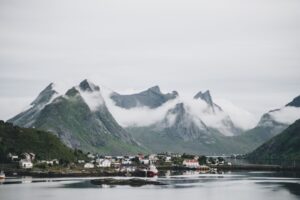Thawing permafrost could release cancer-causing gas
Thawing permafrost could expose the Arctic population to cancer-causing Radon gas.
Radon is an invisible, odorless, naturally occurring radioactive gas which causes approximately one in 10 lung cancer deaths.
In a new study, researchers modelled radon production, its flow through soil, permafrost, and buildings.
They found that the presence of a permafrost layer acts as a radon barrier, reducing surface radiation to a tenth of the background level, but increasing radon concentration behind the barrier by up to 12 times. This was the case for a wide range of depths to the permafrost layer.
They also found that in buildings with basements, the presence of radon gas can increase to more than 100 times its initial value for up to seven years, depending on the depth of the permafrost and how fast the permafrost thaws.

This demonstrates the importance of not only keeping the permafrost layer intact by limiting global warming but also has significant implications for health provision, building codes, and ventilation advice.
Professor Glover, from the University of Leeds said: ‘Radon is known to be the second most important cause of lung cancer after smoking. Smoking also exacerbates radon-acquired lung cancer rates by about 26 times, and smoking is up to 4.4 times more prevalent in Arctic communities.
‘Consequently, an unexpected plume of radon could represent a dangerous health hazard if it is not planned for. Fortunately, simply-installed ventilation is all that is often required if the problem is recognised.
‘If the permafrost were stable, there would be no cause to be concerned. However, it is now widely recognised that climate change is leading to significant thawing of permafrost, with a 42% expected loss of permafrost in the Arctic Circumpolar Permafrost Region (ACPR) by 2050.
‘The radon can then pass through the permafrost and lead to a plume of radioactive gas within buildings that take several years to peak and many more to dissipate.’







 Network
Network